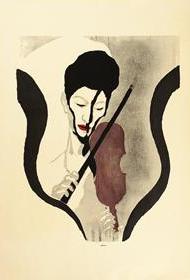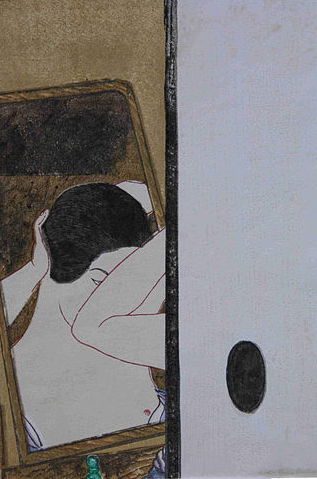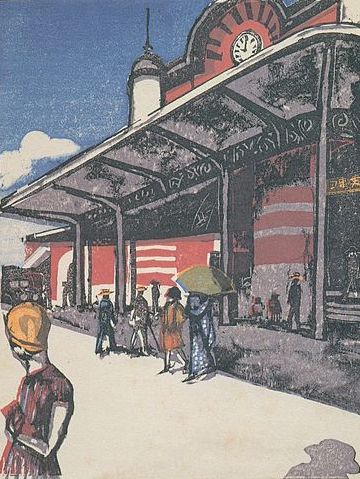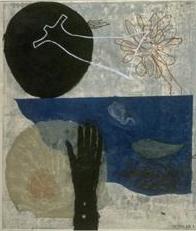Tokyo art and Koshiro Onchi: Sosaku Hanga
Lee Jay Walker
Modern Tokyo Times

The Japanese artist Koshiro Onchi (1891-1955) was a printmaker born into privilege. He belongs to the Sosaku Hanga (creative prints) art movement. Onchi, and other Japanese artists, sought a more individual approach rather than the collaborative nature of ukiyo-e.
The Krannert Art Museum (the University of Illinois) says, “The creative print movement, with its beginnings in early twentieth-century Japan, reacted against the collaborative ukiyo-e printmaking method where three individuals—a draftsman, a carver, and a printer—produced a single print.”

From an early age, he was trained in Western art and calligraphy. He met the influential Takehisa Yumeji when still a teenager. Hence, from knowing this esteemed artist – and studying at the Tokyo School of Fine Arts (1910-1915) in the field of sculpture and oil painting – he was set up extremely well to make a living from the many skills he obtained at a young age.
The British Museum reports, “Onchi was the most important figure in the ‘Sosaku Hanga’ movement from 1918 until his death, outstanding as a print artist, and active as a poet, founder and editor of magazines, an author on the subject of prints, art and literature, a leader and organizer of societies and encourager of other artists; and in book design, which was his actual profession. He was also the most internationally conscious of all the print artists of the period, in spite of never going to the West and hardly ever leaving Japan.”

Onchi famously said, “Art is not something that can be grasped by the mind, it is understood by the heart. If one goes back to its origin, painting expresses the heart in color and form, and it must not be limited to the world of reflected forms captured by sight.”
Overall, he leaves a powerful artistic legacy in Japan. This concerns artists who belong to the Taisho and Showa periods. Hence, Onchi made the most of his privileged situation by creating individualistic art and focusing on many angles to culture. Therefore, despite the militarism period that gripped Japan in the 1930s and 1940s – a continuation of the Meiji Restoration (1868-1912) but even more potent – Onchi overcame this reality by focusing on his innovative art.

Thus, Onchi continues to influence modern artists in Japan concerning his eclectic artistic nature.
https://kam.illinois.edu/exhibition/rise-abstraction-post-war-japan-sosaku-hanga-woodblock-prints
https://www.britishmuseum.org/collection/term/BIOG4690

PLEASE DONATE TO HELP MODERN TOKYO TIMES
Modern Tokyo News is part of the Modern Tokyo Times group
DONATIONS to SUPPORT MODERN TOKYO TIMES – please pay PayPal and DONATE to sawakoart@gmail.com
http://moderntokyotimes.com Modern Tokyo Times – International News and Japan News
http://sawakoart.com – Sawako Utsumi personal website and Modern Tokyo Times artist
https://moderntokyonews.com Modern Tokyo News – Tokyo News and International News
PLEASE JOIN ON TWITTER
https://twitter.com/MTT_News Modern Tokyo Times
PLEASE JOIN ON FACEBOOK